At Southwest Exteriors, we've been installing windows of all kinds since 1989, and in this article we'll break down what pictures windows are, where to install them in your home, what the alternatives are, and a whole lot more.
What Is a Picture Window?
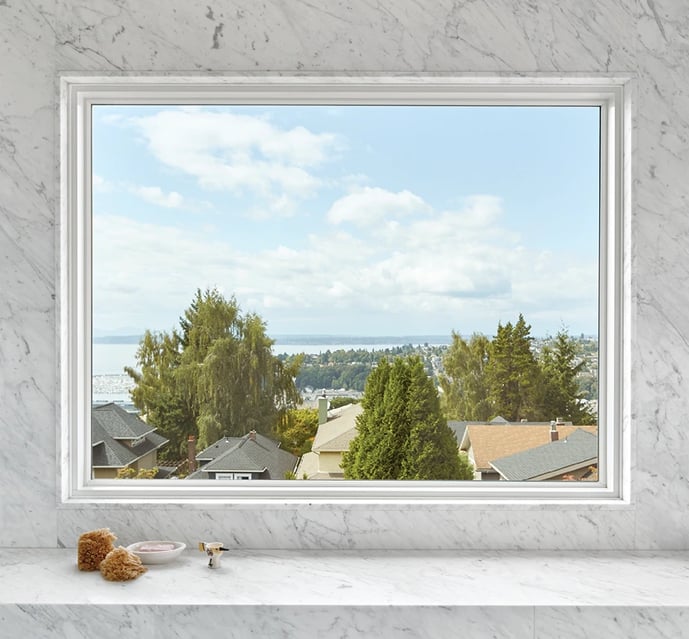
A picture window is a large, fixed-pane window that doesn't open or close. Its primary purpose is to provide an expansive, unobstructed view of the outdoors, almost like a picture frame showcasing a living scene. This type of window is designed to allow in a great deal of natural light, making any room feel more spacious and connected to the outdoors.
Where to Install Picture WindowsChoosing the right location for a picture window in your home can significantly enhance the function and appeal of the space. From living rooms to bedrooms and kitchens, each room offers unique opportunities to capitalize on the benefits of these expansive windows. Let's look at the ideal placements and considerations for installing picture windows in various areas of your home.
Living Rooms
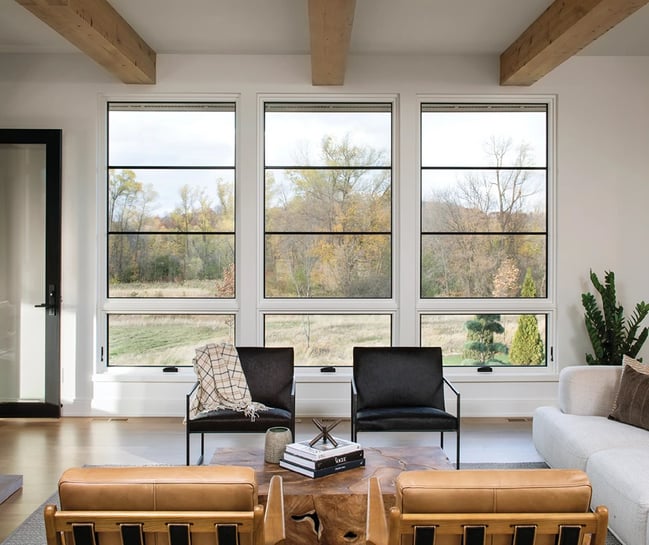
Living rooms are often the heart of your home, where your family and guests gather. Installing picture windows here can be particularly impactful. The benefits include:
- Maximizing Daylight: Living areas benefit greatly from natural light, which can make the space appear larger and more inviting. A picture window pulls in ample sunlight, reducing the need for artificial lighting and creating a warm, welcoming atmosphere.
- Enhancing Views: If your home has a beautiful exterior landscape, a picture window in the living room can frame this view perfectly, turning what might otherwise be a blank wall into a vibrant tableau.
- Design Statement: A large picture window can serve as the focal point of your living room, dictating the layout and decor. It often becomes a natural centerpiece to arrange your furniture around.
Bedrooms
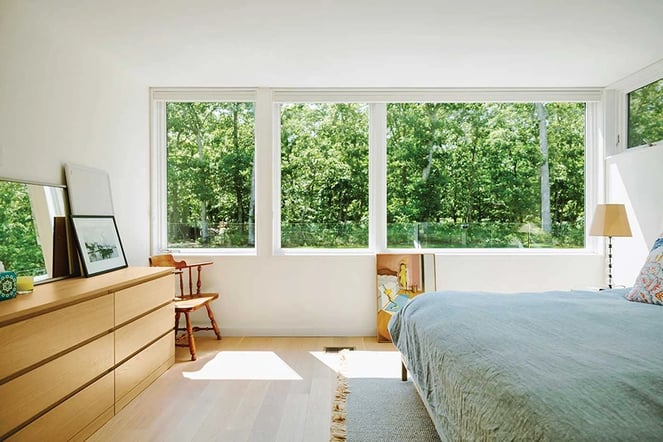
While picture windows can offer stunning views from your bedroom, there are additional considerations to balance:
- Privacy: Bedrooms require a careful consideration of privacy. Large, unobstructed windows may require the use of window treatments such as curtains or blinds that can be closed at night or whenever privacy is needed.
- Positioning: Placing the window where it can offer a view without compromising privacy, such as facing a private backyard or garden, can enhance the bedroom's ambiance without privacy drawbacks.
- Light Control: In bedrooms, controlling light is crucial for a good night’s sleep. Blackout curtains or automated blinds can help manage light exposure, providing the benefits of a picture window while ensuring restful darkness when needed.
Kitchens
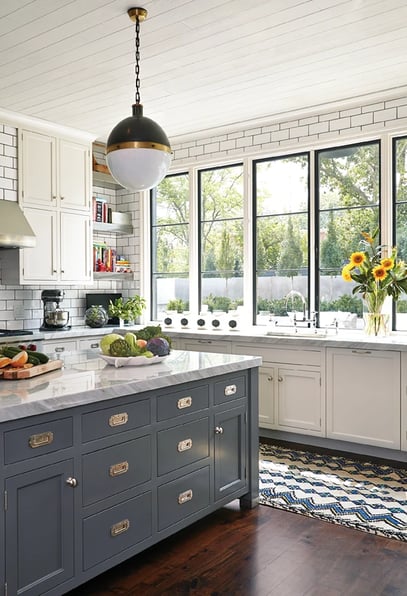
Kitchens, too, are ideal places for picture windows.
- Expanding Visual Space: Kitchens can sometimes feel cramped or closed off. A picture window can visually enlarge your kitchen, making it feel brighter and more open.
- Enjoyable Cooking Experience: A view of the outdoors can transform cooking from a daily chore into a more pleasant and relaxing experience. Imagine preparing meals while gazing out at your garden or watching the kids play in the backyard.
- Ventilation Concerns: Since picture windows do not open, you may want to consider other options for fresh air, such as additional windows or a good ventilation system, to handle cooking odors and humidity.
Alternatives to Picture Windows
While picture windows offer stunning views and abundant natural light, they might not be the best for you. If you want to make an architectural statement (or if you fancy a reading nook), a bay or bow window might be more your style. And if you like expansive views but also want airflow, a large casement window will be a better choice.
Bay Windows
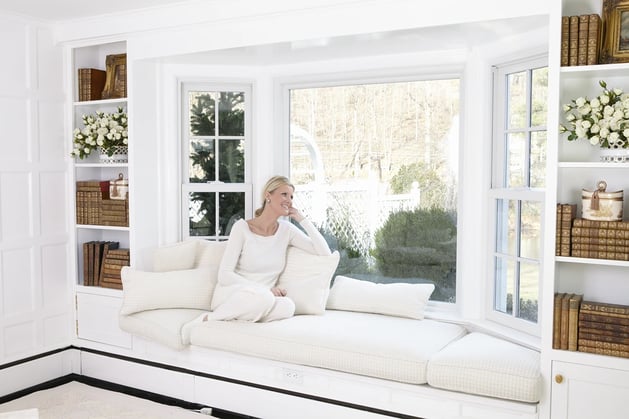
Bay windows are a popular alternative to picture windows, consisting of a central fixed window flanked by angled operable windows. Advantages include:
- Additional Space: Bay windows protrude outward from the wall, creating a cozy nook that can be used for a window seat, storage, or a small reading area.
- Ventilation: The side windows can often be opened, allowing for cross ventilation, something picture windows cannot offer.
- Aesthetic Variety: Bay windows add architectural interest to both the interior and exterior of a home, giving it a distinct appearance.
Bow Windows
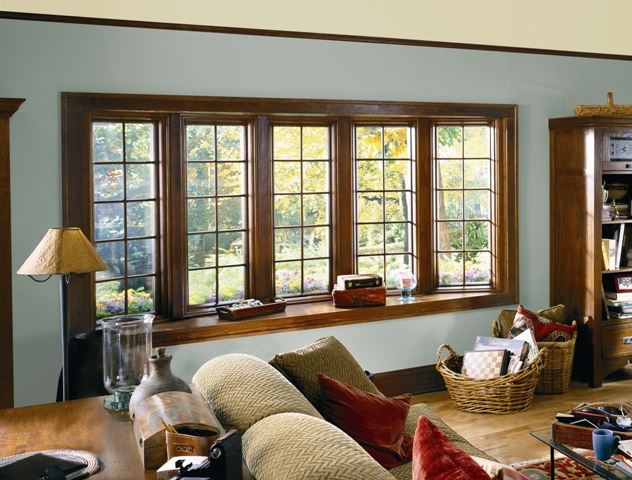
Bow windows are similar to bay windows but include four or more windows that create a gentle, curved appearance. Here's how they compare:
- Enhanced Light: The curvature of a bow window allows for more light to enter from different angles, surpassing a standard picture window.
- Versatile Design: Bow windows fit well with both modern and traditional architecture, enhancing the home's curb appeal with their unique shape.
- Ventilation: All the units in a bow window can be opened for fresh air.
Large Casement Windows

For those who like the idea of large windows but need openability, large casement windows are an excellent choice.
- Full Ventilation: Casement windows hinge at the side and swing outward, offering maximum ventilation as they can catch side breezes and direct them into your home.
- Unobstructed Views: When closed, casement windows provide a large, unobstructed glass area similar to picture windows, making them a viable alternative for those seeking clear views.
- Energy Efficiency: They seal tightly when closed, making them more energy-efficient than some other operable windows.
Comparison with Picture Windows
- Ventilation: Unlike picture windows, bay, bow, and casement windows provide the option to open and allow for fresh air circulation, a crucial consideration for rooms needing more ventilation.
- Architectural Style: Bay and bow windows offer unique three-dimensional shapes that can enhance the character of your home, something a flat picture window cannot achieve.
- View: While all these windows provide excellent views, the uninterrupted expanse of a picture window is unique. However, large casement windows come close by offering sizable glass areas when closed.
- Installation and Space: Bay and bow windows require additional space for installation due to their protruding design, which might not suit every home’s structure. Casement windows, while versatile, may require consideration of outdoor space because they open outward.
Pros of Picture Windows
- Beautiful Views: Whether you're looking out over a lush garden, a bustling cityscape, or a serene beach, picture windows turn your view into a living painting.
- Natural Light: Picture windows not only brighten your living space but can also help reduce your dependence on artificial lighting during the day.
- Aesthetic Appeal: With their simple, elegant design, picture windows create a focal point and can make rooms appear more spacious and inviting.
- Low Maintenance: Unlike windows that open, picture windows have fewer moving parts, which means there's less that can break or require maintenance.
Cons of Picture Windows
- Lack of Ventilation: Since picture windows do not open, their main drawback is that they do not provide airflow. If fresh air circulation is important in your home, you'll need to rely on other windows or doors for ventilation.
Common Picture Window Sizes and Shapes
Picture windows can vary widely in size and shape, accommodating various architectural styles and personal preferences. Here are some typical dimensions:
- Standard Sizes: They can range widely but typically start from about 2 feet in width to 8 feet or more. Heights can vary similarly, sometimes designed to fill the space between the floor and the ceiling in a room.
- Shapes: While rectangular shapes are most common, picture windows can also be square, or even custom shapes like arched or circular designs, providing a unique architectural element to your home.
Incorporating a picture window into your living space not only enhances the aesthetic appeal but also boosts the natural light and visual expansiveness of the area. Ideal for living rooms, dining areas, or any place where you desire a bond with the outdoors without the obstruction of window sashes or screens, picture windows transform both the interior mood and the external façade of your home.
Considerations When Choosing Picture Windows
Installing a picture window in your home can dramatically transform a space, but several important factors need to be considered to ensure the window suits your home’s needs and maintains its integrity over time. Here, we’ll explore the considerations surrounding energy efficiency, safety and placement, and the choice of frame materials to help you make an informed decision.
Energy Efficiency
One of the most critical aspects to consider when selecting a picture window is its energy efficiency. Large expanses of glass can lead to significant heat loss in the winter and heat gain in the summer if not properly addressed.
- Glazing Options: Look for windows with double or triple-pane glass filled with inert gas like argon or krypton, which provides better insulation than single-pane windows.
- Low-E Coatings: Windows treated with Low-E (low emissivity) coatings can help reflect infrared light, keeping heat inside during the winter and outside during the summer. These coatings also protect against UV rays, preventing your furniture from fading.
- Energy Star Ratings: Choosing windows that meet or exceed Energy Star standards ensures they are tailored for optimal performance in your specific climate zone.
Frame Materials
The material of your window frame not only affects the window's aesthetics but also its performance and longevity. Here’s a brief overview of common materials:
- Vinyl: Vinyl frames are cost-effective, provide good insulation, and require low maintenance. They are resistant to moisture and do not need painting. However, vinyl is not as long-lasting or as energy-efficient as fiberglass.
- Wood: Wood frames offer a classic appearance and excellent insulative properties. They can be painted or stained to match home décor but demand more maintenance to prevent rot and warping.
- Aluminum: Aluminum frames are strong, lightweight, and low maintenance. They are less effective insulators but are good for large windows due to their structural strength.
- Fiberglass: Combining the benefits of both vinyl and wood, fiberglass frames are durable, maintenance-free, and offer great insulation. They can be more expensive but are ideal if you're looking for a long-term solution (they can last up to 50 years).
Considering a Remodel?

If you're considering a remodel, check out our Ultimate Home Remodeling Guide, where we help you make sure you get the look you love without the hassle. Alternatively, schedule a free consultation with Southwest Exteriors. We're experts in remodeling, whether you want to add a picture window or a new door.

